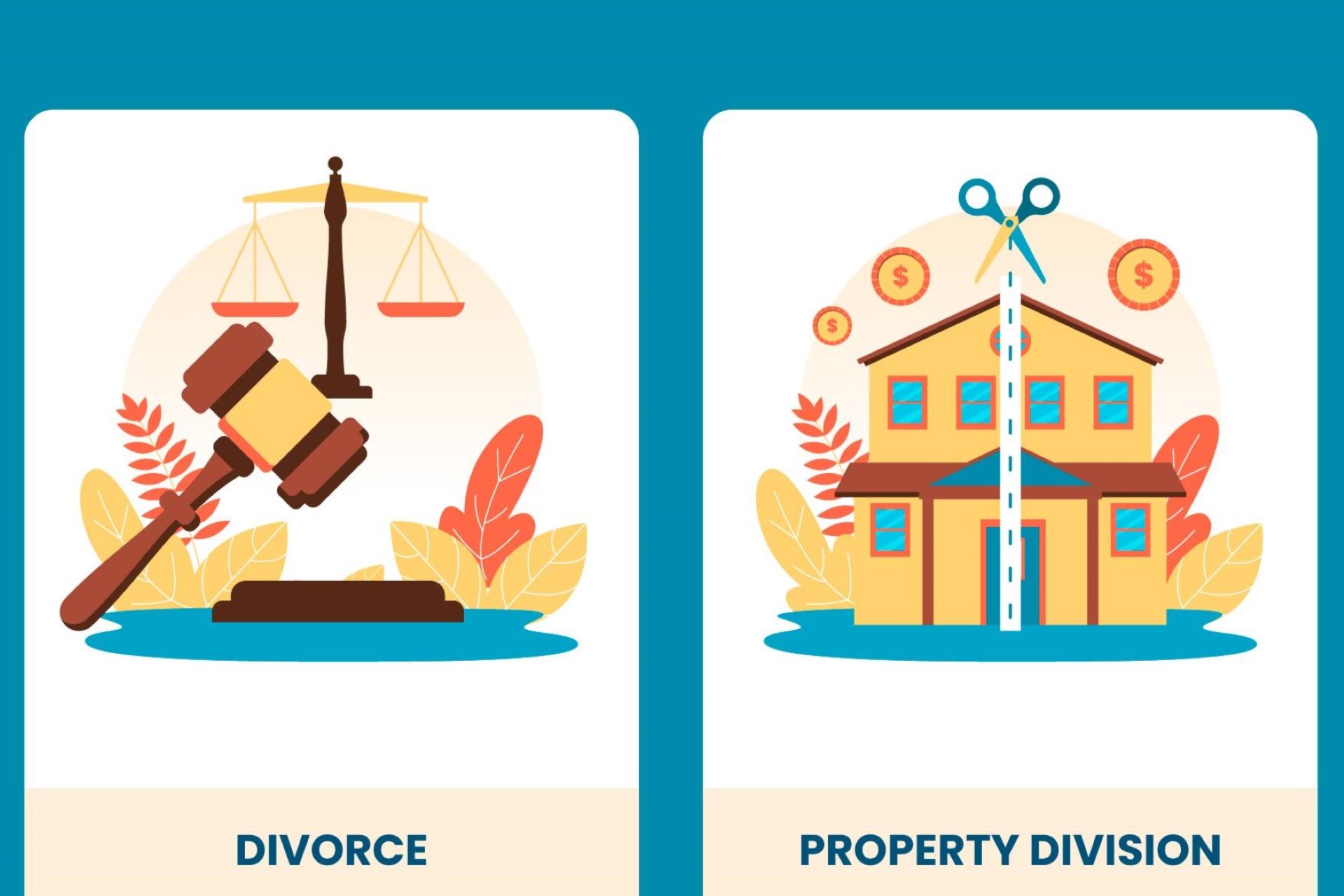Divorce is an emotionally challenging time, and when it comes to dividing assets, rental property can add an extra layer of complexity. Understanding how rental property is divided during a divorce and what factors to consider can help ease the process and lead to a fair resolution. In this guide, we’ll break down the essential aspects of dividing rental property in a divorce, providing you with a comprehensive overview to navigate this tricky situation.
Rental Property in Divorce
Before diving into how rental property is divided during a divorce, it’s crucial to understand what rental property encompasses. Rental property typically refers to real estate that one or both spouses own and use to generate rental income. This can span various types of properties, including single-family homes, multi-family units, and commercial buildings. The primary characteristic of rental property is that it is held for the purpose of renting out to tenants, thereby generating ongoing revenue. Understanding this definition helps frame the discussion on how such assets are managed and divided in divorce proceedings.
In the context of divorce, rental properties are considered significant assets because they not only represent potential financial value but also ongoing income streams. The nature of these properties can impact decisions about their division, as each type—whether residential or commercial—comes with its own set of considerations. For instance, managing a single-family home might be less complex than handling a multi-unit apartment building or commercial space, which can affect how these properties are valued and divided. Therefore, grasping the specific type of rental property involved is essential for fair and effective asset division.
Legal Framework for Property Division
The legal framework governing the division of rental property in a divorce varies depending on the jurisdiction. In community property states, assets acquired during the marriage, including rental properties, are generally divided equally between the spouses. This means that each spouse is entitled to a 50% share of the total value of the property. Community property laws aim for equal distribution to ensure fairness and reflect the shared nature of marital assets. This approach simplifies the division process by adhering to a straightforward principle of equality.
On the other hand, in equitable distribution states, the division of assets, including rental properties, is based on fairness rather than strict equality. Courts in these states consider various factors to determine a division that is equitable to both parties. This means that while one spouse may not receive exactly 50% of the property’s value, the division will be based on factors such as each spouse’s financial and non-financial contributions, the length of the marriage, and each party’s economic circumstances. This approach provides more flexibility and aims to achieve a fair outcome based on the specifics of each case.
Assessing Rental Property Value
Accurate valuation of rental property is crucial in the divorce process to ensure that each party receives a fair share of the asset’s worth. The following methods are commonly used to determine the property’s value:
- Professional Appraisals: This method involves hiring a certified appraiser who evaluates the property based on various factors such as its condition, location, and recent sales of comparable properties. The appraiser provides a detailed report outlining the property’s current market value. This approach offers a comprehensive and expert assessment, making it a reliable method for determining the property’s worth.
- Market Comparisons: Another method is to analyze recent sales data of similar rental properties in the area. By comparing the property in question to others with similar features, location, and condition, this approach helps estimate the property’s value. Market comparisons can provide a quick and effective valuation, although it might not be as detailed as a formal appraisal.
Accurate valuation through either method is essential as it impacts how the property is divided between spouses. Without a precise value, achieving a fair and equitable distribution becomes challenging, potentially leading to disputes or inequities in the final settlement.
Factors Affecting Rental Property Division
Several factors can influence how rental property is divided during a divorce. Understanding these factors is vital for a fair distribution of assets:
- Duration of the Marriage: Generally, the longer the marriage, the more likely it is that rental properties acquired during the marriage will be considered marital property and divided accordingly. Longer marriages often involve more substantial joint investments and contributions, which supports treating such properties as shared assets.
- Contributions to the Property: Contributions to the acquisition and maintenance of the rental property are also crucial. This includes:
- Financial Contributions: Payments toward the mortgage, property taxes, and maintenance costs.
- Non-Financial Contributions: Efforts in managing the property and handling tenant relationships.
Courts will consider these contributions to determine a fair division that reflects each party’s involvement and effort. Evaluating both financial and non-financial contributions helps establish a more accurate picture of each party’s share of the property’s value, leading to a fairer settlement.
Options for Dividing Rental Property
When it comes to dividing rental property during a divorce, several key options are typically considered.
- Selling the Property: This is often the most straightforward solution for dividing rental property. In this scenario, the property is put on the market, sold, and the proceeds from the sale are divided between the spouses according to the terms of the divorce settlement or as determined by the court. Selling the property allows both parties to liquidate the asset and split the cash value, which can simplify the division process. This option is beneficial when both parties prefer to avoid ongoing management responsibilities or when neither party wants to retain the property. However, the timing of the sale can affect the final proceeds, and the process can be influenced by market conditions.
- One Party Buying Out the Other: Another option is for one spouse to buy out the other’s share of the rental property. This approach involves one party paying a lump sum or adjusting the property’s value in the overall settlement to compensate the other spouse. This option allows one spouse to retain full ownership of the property while providing the other spouse with a fair financial settlement. The buyout amount is typically determined based on the appraised value of the property minus any outstanding mortgages or debts. This method can be preferable if one party is particularly attached to the property or if the property continues to generate rental income that one party wishes to retain.
- Continuing Joint Ownership: In some cases, divorcing spouses may choose to continue co-owning the rental property. This option can be complex as it requires clear agreements on how the property will be managed, who will handle day-to-day responsibilities, and how expenses and income will be shared. Continuing joint ownership might be suitable if the property is highly valuable, the spouses have a good working relationship, or if the property generates significant income that both parties want to retain. However, this arrangement can lead to ongoing disputes if not managed carefully, and it requires both parties to agree on long-term management and financial obligations.
| Option | Description | Pros | Cons |
| Selling the Property | The property is sold, and proceeds are divided between the spouses. | Simple division, provides cash value. | Market conditions can affect sale price; emotional impact. |
| One Party Buying Out the Other | One spouse buys the other’s share of the property, either with a lump sum or through settlement adjustments. | Allows one party to keep the property; avoids market fluctuations. | Requires valuation and financial resources; potential for disputes. |
| Continuing Joint Ownership | Spouses continue to co-own the property, sharing management and income responsibilities. | Retains property value and income; can be flexible. | Complex management; requires ongoing communication and agreement. |
Legal and Financial Considerations
Dividing rental property in a divorce involves several legal and financial considerations that can significantly impact both parties. One of the primary concerns is the tax implications associated with selling rental property. When a rental property is sold, it may trigger capital gains taxes, which are based on the difference between the sale price and the property’s original purchase price or its adjusted basis. This tax liability needs to be factored into the division process, as it can affect the net proceeds from the sale and the overall financial settlement. Consulting with a tax advisor can help both parties understand and manage these tax implications effectively.
Additionally, mortgage and debt obligations associated with the rental property need to be addressed. If there is an outstanding mortgage, both parties must determine how to handle the remaining balance. Options include selling the property to pay off the mortgage or refinancing the loan to transfer responsibility to one spouse. Debt obligations can complicate the division process, as both parties need to agree on how to manage or settle these liabilities. Furthermore, if joint ownership continues, clear agreements must be established regarding who will handle property management tasks and how ongoing expenses, such as maintenance and property taxes, will be shared.
Custody of Rental Property Income
The distribution of rental income can also play a crucial role in the divorce settlement. Rental income generated by the property is often considered in determining spousal support and child support, as it represents a significant financial resource. Courts may take into account the rental income when calculating these support obligations, as it can impact each spouse’s financial needs and ability to contribute to the household expenses. Properly documenting and disclosing rental income is essential for a fair and transparent settlement process.
Moreover, how rental income is divided can influence the overall financial settlement. If one spouse retains ownership of the rental property, they might also retain the rental income, which could affect the amount of support the other spouse receives. Conversely, if the property is sold, the rental income ceases, but the proceeds from the sale can be used to settle support obligations or other financial matters. Clear agreements on how rental income will be treated in the settlement can help prevent disputes and ensure that both parties’ financial needs are addressed.



